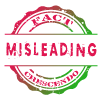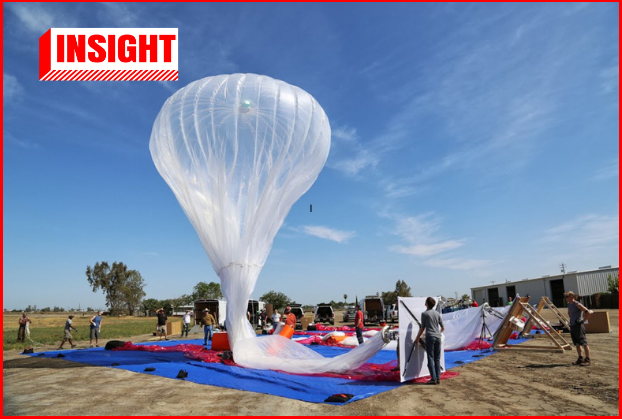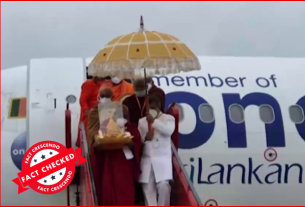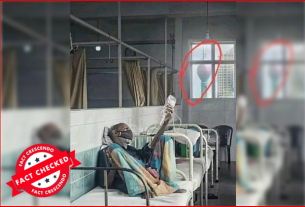Subscribe to our WhatsApp Channel
The Google Loon project, an innovative initiative aimed at providing internet access through high-altitude balloons, was tipped to be launched in Sri Lanka but ultimately did not succeed. Despite this, numerous misleading posts about the project continue circulating on Sri Lankan social media, creating confusion about its outcomes and current status.
Social Media Posts
In social media posts, Former Minister of Digital Infrastructure Harin Fernando is accused of spending millions of government funds on the unsuccessful Google Loon project during the Yahapalana government’s tenure.
This post was shared among Facebook users as well.
We decided to search about this.
Explanation
Background:
During the Yahapalana government era, the Information Communication Agency of Sri Lanka (ICTA), under the Ministry of Telecommunication and Digital Infrastructure, aimed to improve national broadband infrastructure. This included the Free Wi-Fi Project, providing internet access at major public locations. It started in 2015 and was mentioned in the official news portal of the Sri Lanka government. More details can be read here. Parallel to the Wi-Fi project, the concept of Google Loon also came into action.
Google Loon Project Overview:
The Google Loon project, a brainchild of project ‘X’ at Google’s parent company, Alphabet, device the mechanism of using high-altitude balloons to provide internet access to rural and remote areas.
Chamath Palihapitiya, Founder of Rama Corporation, facilitated discussions between Google and the Sri Lankan government. In 2017, ICTA, Google Loon LLC, and affiliates signed a Memorandum of Understanding (MoU) to establish working relationships and pilot the project. More details can be read here.
Key Points:
Government Spending: Speaking to ReadMe, Harin Fernando and former ICTA CEO Muhunthan Canagey both confirmed that no public funds were used for the project. Any significant payments would require cabinet-approved paper, which was never produced. The Read Me article can be found here.
At the end of 2020, a discussion in Parliament’s Committee on Public Enterprises (COPE) revealed discrepancies regarding the costs associated with the Google Loon project. COPE chairman Charitha Herath cited an Auditor General’s report indicating that 1.8 million rupees were spent on customs clearing charges for Google Loon equipment and 6.4 million rupees were spent on its launch. However, the ICTA chairman rejected the claim of 6.4 million rupees being spent on the launch, stating that only 1.8 million rupees were spent on custom clearances, while the 6.4 million rupees were actually used for a Wi-Fi project during the Yahapalana government. A related report of NewsWire report can be reached here.
In parliament, former minister Harin Fernando pointed out discrepancies between the Sinhala and English versions of the Auditor General’s report and clarified that the 6.4 million rupees were indeed used for the Wi-Fi project launched as part of the Yahapalana government’s 100-day program in 2015, but the government spent only 1.8 million as custom clearance charges.
Furthermore, Sirasa News reported in 2017 that close to 10 million (1 crore) Rupees were spent on Google Loon project expenses associated with promotional content, ceremonial proceedings, etc. More on this here. Here is another report by Newsfirst. However, the government at the time had denied many of these allegations, and here is a report by Readme on the same.
Spectrum Issues: The project required specific frequency bands (700MHz, 70GHz, 80GHz, and 5.8GHz) for communication. However, these frequencies were already in use or allocated for other services, making it difficult to repurpose them for Project Loon. A report on this can be reached here.
Regulatory Challenges: The Telecommunications Regulatory Commission of Sri Lanka (TRCSL) and ITU regulations posed challenges. ITU indicated that the necessary frequencies were unavailable for high-altitude use due to interference concerns.
Project Status: The project was only in the testing phase and was not obligated to implement it fully. The tests aimed to determine its viability in Sri Lanka.
Public Misconceptions: Claims of fraud and misuse of funds are unfounded. The MoU was purely for testing, not for a full-scale commercial rollout. Rama Corporation was not part of Google and intended to provide relevant hardware and software for the implementation of Project Loon and facilitate discussions, not to manage the project or spectrum.
International Context: However, similar tests were conducted in New Zealand and Peru using different frequency bands. These countries provided valuable insights into the project’s feasibility.
Loon Project Discontinued: Nine years after its launch, in January 2021, the CEO of X, Astro Teller, announced that the Google Loon project was ending. He says that the team hopes that Loon is a stepping stone to future technologies and businesses that can fill in blank spots on the globe’s connectivity map. Details about it can be read here and here.
Follow us and stay up to date with our latest fact checks.
Facebook | Twitter | Instagram | Google News | TikTok

Title:The Google Loon Project and Government Spending in Sri Lanka
Fact Check By: Fact Crescendo TeamResult: Misleading






